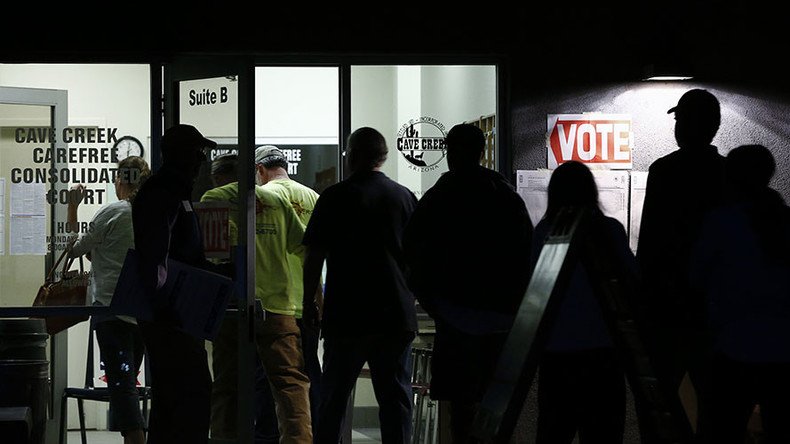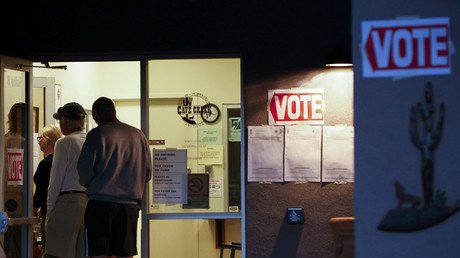Justice Dept. launches investigation into Arizona primary

The DOJ is investigating last month's Arizona primary, to determine whether the state's largest county complied with voting rights laws. It comes after reports that voters were still waiting to cast their ballots when the winners were declared.
The Maricopa County Recorder's Office received a letter from the Justice Department's Civil Rights Division on Friday, which asked for specific data on the number of polling places that were cut by the county prior to the primary on March 22, and the reasons why they were cut.
“We have no problem cooperating with them, so we should have that over to them over the next couple of weeks,” Elizabeth Bartholomew, communications manager for Maricopa County’s Recorder’s Office told The Huffington Post.
The county had just 60 polling places available during the primary, compared to 600 in 2012. The lack of voting stations meant there was just one polling place per 21,000 residents for the county, which encompasses the state capital of Phoenix – home to most of the state's population.
The cut led to incredibly long lines, some as long as five hours, with many voters still in line after the primary winners – Republican Donald Trump (47.1%) and Democrat Hillary Clinton (57.6%) were declared in the state.
Speaking during an Arizona House Elections Committee hearing, Helen Purcell, the county recorder in charge of organizing elections in the county, said: “I can't go back and undo it. I wish I could, but I cannot...I made a giant mistake.”
She previously told local news station Fox 10 that voters were partially to blame for “getting in line” but later admitted the county made “bad decisions” and “miscalculated” the number of stations that were needed, The Arizona Republic reported.
Purcell also stated that she had expected more residents to vote early by mail, therefore reducing the need for more election precincts.
The election disaster received an additional dose of controversy in a letter from Phoenix's Democratic mayor, Greg Stanton, in which he accused Purcell of distributing “fewer polling locations to parts of the county with higher minority populations.” This, he wrote, led to just one polling place for every 108,000 residents within the city limits of Phoenix.
Arizona Governor Doug Ducey, a Republican, also said in a statement after the primary that he wanted election officials to investigate why the lines were so long outside polling places.
In addition to the cuts to polling stations, others were turned away because their party affiliation change had failed to be reflected at their precincts. Other voters who said they received new voter IDs in the mail on Election Day were turned away after being told they had been placed in a new district and were therefore assigned to a different polling place.
Maricopa County, the largest county in Arizona, is home to one million eligible voters.













